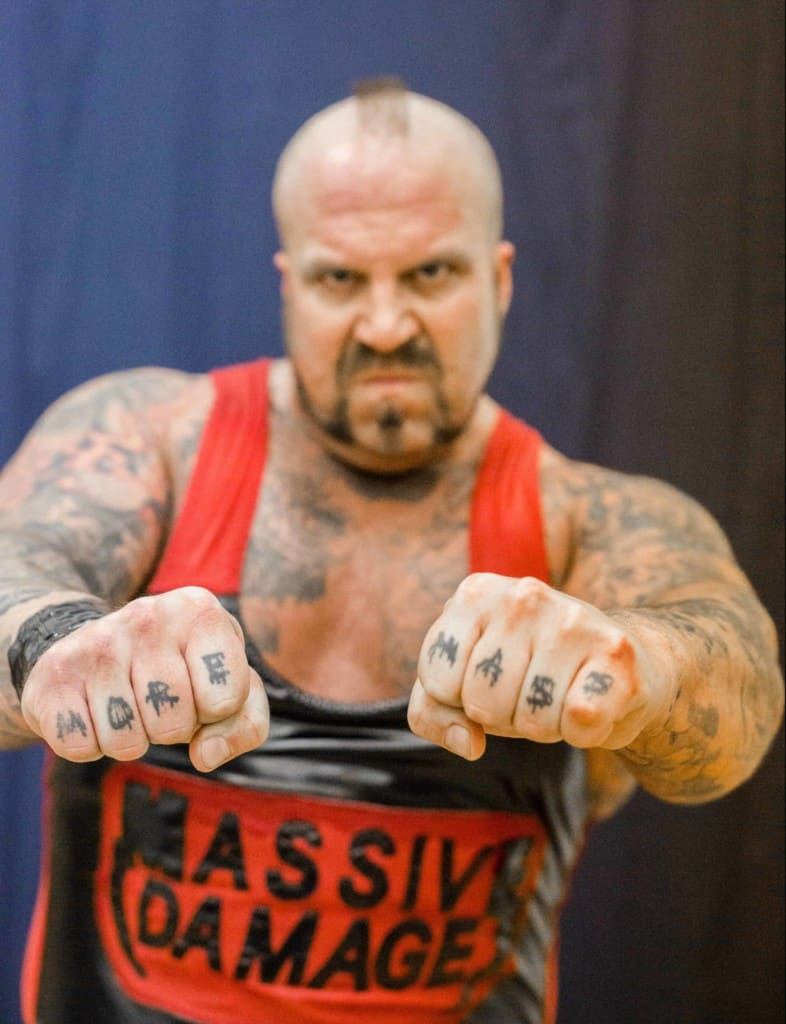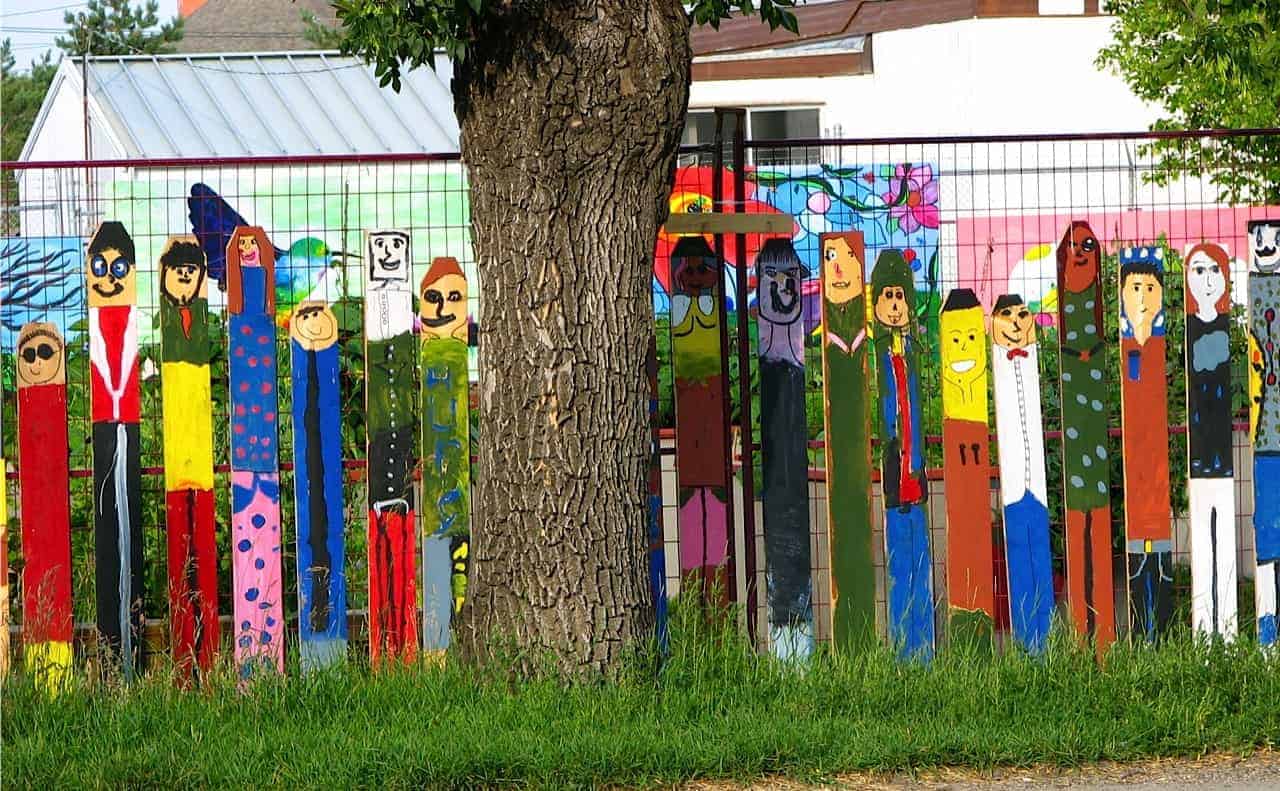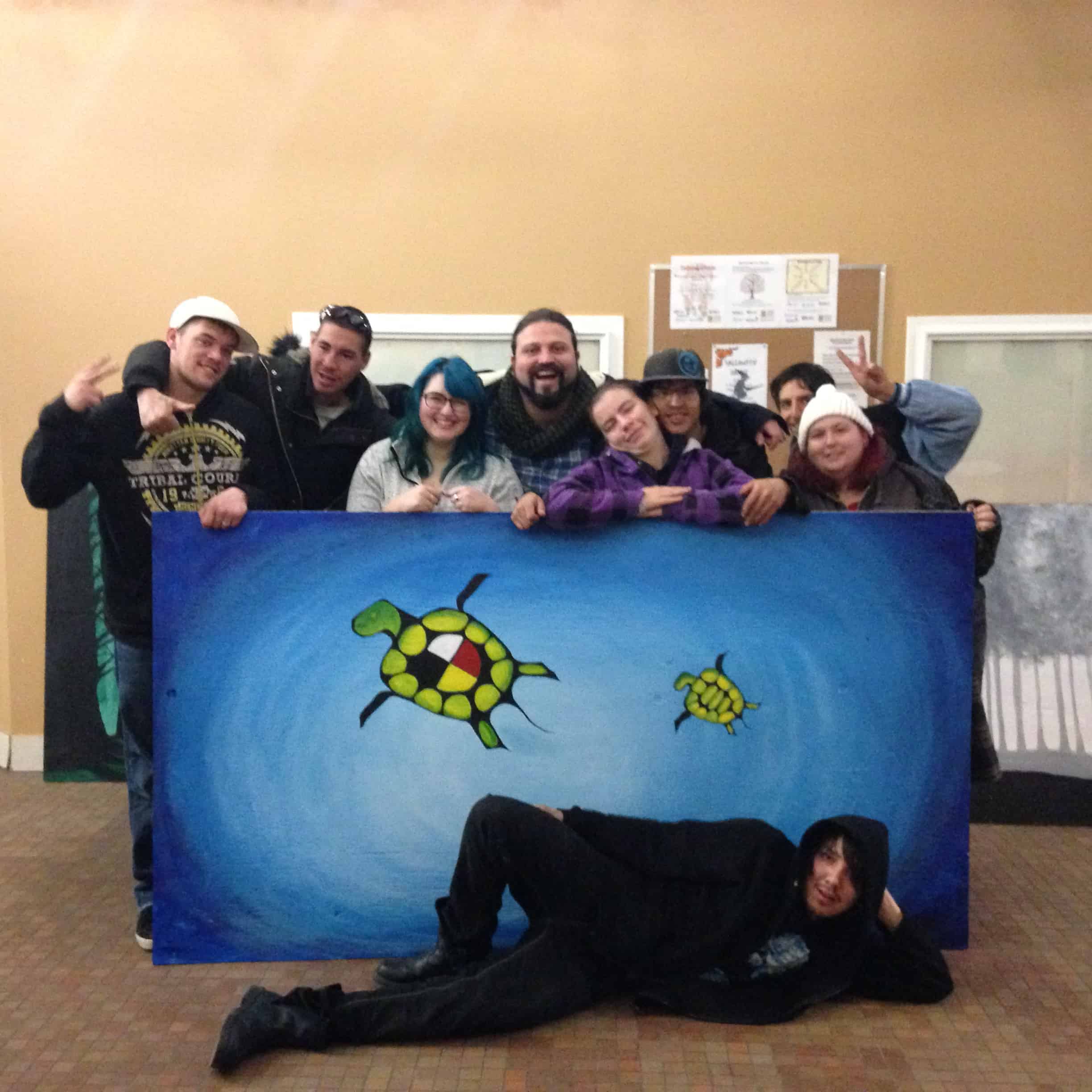Making a difference to at-risk youth
Meet Sean Dunster and Sebastian Barrera.
Both help at-risk youth. Dunster’s approach is through wrestling and motivational presentations, Barrera’s through community development and public art.
Dunster’s path into wrestling took many twists and turns. “I was always a misfit because of my size, so I called my pro wrestling character Massive Damage.” He trained for football, then bodybuilding, until a pro wrestler recognized that Dunster’s frame and athleticism was perfect for the ring.
“As a child, an adult who should have been my protector bullied me. This taught me to get tough, to fight back. I became super defensive and turned into a bully myself.”
His story and struggle with addictions form the core of the Fight for Life empowerment program he brings to teens at schools throughout Canada.
It’s a tale of success and heartbreak, of finding his path as a pro wrestler, being coached by WWE star Leo Burke, starting his career and then losing 18 friends to steroids, prescription drugs, alcohol and hard drugs. He’s a survivor with a big heart.

“When I give a presentation, I tell the kids that the tattoos that cover my body are in memory of my lost friends.” His life was saved when a friend and mentor encouraged him to go for treatment and sober up. “I knew that I too would die if I didn’t change.”
Dunster has wrestled for 22 years and celebrates seven years of sobriety this month. “I’ve had some white knuckle times. I wouldn’t have persevered without support.”
He trains young wrestlers, all of whom he encourages to stay drug free, for Monster Pro Wrestling at Gold’s Gym in Westmount Centre. “My best moments were when three of them were invited to try out with the WWE.”
Barrera is the founder of CreArt, a community-based organization.
“I came to Canada from Chile, on a tourist visa,” he explained. “My girlfriend was Canadian and we married while on holiday in Spain. I had to wait for two years before I could apply for paid work. While playing my guitar in my backyard in Parkdale, neighbours began to ask me if I would give lessons.”
CreArt was born, with free guitar lessons offered weekly at Parkdale-Cromdale Community League. He’s also a high-risk youth worker for Boyle Street Community Services.
“The greatest risk for youth,” he explained, “is being marginalized within a society. Those who come to the drop-in centre are primarily indigenous and have experienced the after effects of colonization, the loss of culture, intergenerational impact of residential schools, trauma and homelessness.”
He starts by helping youth learn their history so they can become critical thinkers. For example, one day he took the group to the Grandin LRT station to study the mural of Bishop Vital Grandin and a nun holding an indigenous child.
“What do you see?” I asked them. “They were puzzled, but I kept silent. They were bored and I repeated the question. They got restless and still I persisted.” Finally, one boy asked, “How come the children aren’t with their mothers and fathers?” A discussion about residential schools followed.
Next, he provides materials for creating art (music, drama, or painting) about the discovery. Barrera said he believes art is a tool for social transformation.

The results of his initiatives are visible throughout the city. The first was an installation of 62 murals along a retaining wall in Kinnaird Ravine. Another is the art at the Little Italy Community Garden on 95 Street and 105 Avenue.
“Public art should be more than art for public consumption, it should be art created by the community.” He envisions music, spoken word, film, and multimedia. A film, written and acted by members of his drop-in group, is about to be released.
Youth are being well-served by Barrera and Bunster.
Header Image: Sebastian Barrera uses art and community development when working with youth, such as the Kinnaird Ravine mural project. Credit: Supplied







